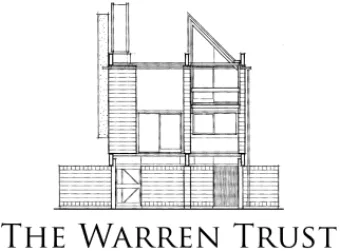Profile: Divya Purushotham
19 Aug 2017A+W NZ member Profile: Claire McCall, from Dock Street Group, recently interviewed A+W NZ Secretary Divya Purushotham and wrote the following profile, which we share with her permission;

You were born in Bangalore and lived there until you were 12. Tell us about growing up in Southern India.
Bangalore is a city of 8 million people so it was big, busy and bustling. My immediate family includes my parents and my brother, who is eight years younger than me. School holidays were spent with cousins at my maternal grandmother’s, and after school we went to my paternal grandparents’ house – so I grew up around a lot of people.
I have vivid memories of after-school rickshaw rides to my grandparent’s house where they had an English garden and red oxide flooring. I am remember the Friday evening ritual of getting street food down the road with my mum, the smell of jasmine while walking past local temples, and late night movies and lights along the central city streets.
When I was 12, my parents, who both worked in banking, opted for a change. They moved to Auckland at a time when the world and its opportunities were open to them.
You own a worker’s cottage in Onehunga with your husband Sajeev who is also doing architecture at Patterson Associates. Tell us more.
Our house is about 110 years old. I still remember the day of the open home – I was hooked straightaway. There are colonial English aspects to it that remind me of my grandparents’ house and Bangalore at times. We were very lucky to be able to buy it – at 75m2, it probably appealed to a niche market as it also has a few zoning restrictions meaning we can’t alter the exterior.
We’re still finding out things about the cottage. When we bought it, it came with a name plate outside our front door - ‘Temuka’ – and we’re working on discovering its significance. Just the other day, we met a lady who told us that our street was named after one of her ancestors. There is so much history here and I feel like we’ve only just scraped the surface.
We have a courtyard and a sleepout at the back which we are doing up and hope to rent out soon but with two design opinions in the house, things are taking longer than expected! We’ll eventually get around to renovating the main home; when we do, it’s important to us that we stay true to the heritage and history of Onehunga.
What made you decide to study architecture?
I have always been interested in drawing. I started with anatomy and moved onto objects, eventually drawing the built environment around me. This led me to doing art and design in school – but I also enjoyed the practicality of some of the sciences.
I had a few career options open but by the time I visited Auckland University for their open day, and after talking to a few teachers at school, it felt natural to go with architecture. It was a no-brainer and I’ve never looked back. I graduated in 2012.
Do you ever travel back to India?
Auckland is now home, but with the first 12 years in India, I’ve spent some of the most influential years of life in a completely different context. I still have extended family in India so I make the trip back as often as I can.
More recently, I’ve started to travel to the northern part of the country where the architecture, the people and the food are quite different to the south where I was born. I’m still ticking things off the list – the next is to get to Chandigarh, the city that was planned by Le Corbusier.
India is full of surprises. Every time I visit, I discover something new. After every trip, I return to New Zealand with a better appreciation of and different attitude towards the two cultures.
I have always been interested in drawing. I started with anatomy and moved onto objects, eventually drawing the built environment around me.
Divya Purushotham
How does your cultural background affect the way you think about design?
I revisited India while I was studying architecture and learnt a lot about what is embedded in its culture. Indian art, textiles and architecture are all heavily crafted. From the historic places such as the Taj Mahal and Fatehpur Sikri, to brass sculptures and sarees, there is crafting everywhere and at every scale. This reminds me a bit of what we do here at Warren and Mahoney. Even though we have some great large scale projects, every aspect is designed and articulated, every staircase is treated like sculpture, while every detail is scrutinised. We get to work on craft at the micro and macro level on a day-to-day basis.
As part of the Wynyard Quarter Innovation Precinct team, I was fortunate to work on larger scale elements as well as smaller – for example, the signage on the Mason Bros. building. That was an exercise in itself and I took inspiration from the original engineering company logo.
Although I’m slowly losing the time to do things, I try to maintain this idea of crafting through a few community courses, the highlights being pottery and jewellery making. They’re both patient crafts but also a lot of fun and make for great presents.
Who are your mentors and what have you learned from them?
I started at Warren and Mahoney in April 2015 and one of the first projects I worked on was some feasibility/concepts for Wynyard Quarter with Blair (Johnstone). It was so different to anything I had done before – these buildings are changing the face our city. It was a privilege to get an insight into Blair’s thinking process and the speed at which he works. He’s also been extremely supportive of other opportunities that have come up along the way.
I’ve also worked on a housing development with Patrick (Sloan) and it was fascinating to learn from his experiences in China. He encouraged me into some leadership of aspects of the project (with guidance), such as taking the lead at weekly meetings with clients.
Lastly, I’ve learnt a lot from working with Lynda Simmons, co-chair of Architecture +Women NZ. Listening to her talk about why she does what she does showcases the passion with which she carries out her work for A+W. The depth of her research and analysis is evident – her work shines the light on other incredible people and provides opportunities for many more. This takes a kind of selflessness, and it is something I have always admired.
What are you working on at the moment?
My time is predominantly split between two projects: Wynyard Quarter Innovation Precinct (commercial) which has a number of buildings at varying stages and Tauranga Crossing, a retail mall typology. Interestingly, my thesis project at university looked at the homogenisation of architecture, particularly in regard to retail environments so it’s great to be part of a team that is making the Tauranga building contextually relevant. The strategies can be relatively simple and by breaking retail mall conventions, we are able to achieve much more warm, relevant and gritty outcomes rather than an all-white faceless box.
Even though we have some great large scale projects, every aspect is designed and articulated, every staircase is treated like sculpture, while every detail is scrutinised. We get to work on craft at the micro and macro level on a day-to-day basis.
Divya Purushotham
How far along the path to registration are you?
I’m hoping to get there in a year or two, but it’s not a race. Some graduates get the relevant experience in two or three years. Others work on projects that take a bit longer. Learning is the invaluable thing and architecture, for me, is bigger than registration. So yes, it’s on my ‘to do’ list but I’ll do it when I’m ready. Besides, I’m still under 30 – and they say that at 45, you’re still a young architect – so I have a way to go!
You are the liaison between the NZIA and Architecture + Women NZ. How did you get involved in that organisation?
A+W-NZ is an active group that promotes visibility and inclusiveness for those who work in architecture via four channels – networks, events, research and policies. And the NZIA Auckland Branch Committee is filled with people who are driven and contribute immensely towards their various portfolios with their time, energy and networks. As secretary of A+W-NZ, my role is to carry information between the two organisations, to update them on events, share knowledge, report on activities and seek potential opportunities.
I also think A+W-NZ is an important organisation because discussing issues around diversity and workplace culture can be a great tool for the visibility of many other groups in the profession. We wouldn’t be where we are if it wasn’t for previous generations of female architects who have worked tirelessly to achieve this nurturing environment for the rest of us.
You will be taking part in the Architecture + Women and SGA workshop soon. What does that involve?
Lily Wong and I will be sharing participation in the 8-week project that is held at the SGA workshop. We’ll be prefabricating a building for the Motu Kaikoura Trust whose research facility in Kaikoura Island burnt down in 2013 due to arson.
The new building, designed by SGA, will be prefabricated at the SGA and Crate workshops in Kingsland and barged to Kaikoura Island (off Great Barrier Island) for assembly over Labour Weekend.
This workshop will help us understand the building process from inside out and the value in efficiency of materials and processes. But most importantly, this is an opportunity for us to build for the community. The most rewarding outcome will be to observe how the building gets used over time, how it weathers, and the satisfaction of people using and moving through something you built with your own hands. It’s an exciting, one-of-a-kind opportunity – but first, I think I’ll need to find myself a tool belt.












